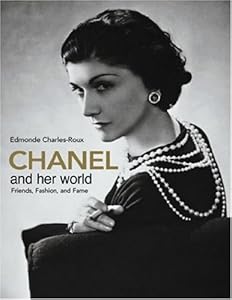 Image via WikipediaBy Tristan Black
Image via WikipediaBy Tristan BlackHard core vegans focus on a dieting regimen and life-style that will not cause injury to animals and the planet directly or indirectly via the processing of animal hides like leather, sheepskin, silk or wool. Vegans reject shoes or boots and garments created from animal derived goods.
At one time becoming "vegan" meant centering on what you had to lose in order to experience an ethical healthy way of life. At this time individuals are more conscious of what they're putting on, what supplies and chemicals have been used, and how it impacts the environment.
The rise of vegan fashions and vegan stores that sell cruelty free merchandise have led vegans and non-vegans alike to change their shopping habits. Only 10 years ago, shoppers looking for animal friendly products had to resort to large box retailers, considered ''vegan'' due to stocking synthetic material items in their product mix.
Today you'll find a plethora of nationwide chains, boutiques, on-line retailers, and eco-minded labels are encouraging consumers, even those merely flirting with a vegetarian eating plan, to acknowledge its precepts past the kitchen and into their wardrobes. Part of the cause for the surge in vegan stores is the fact that the vegetarian population have grown significantly in the past couple of years.
It can be estimated that as of 2011 there are 5.2 million vegetarians within the USA and Canada and approximately Forty percentage are vegans. Youngsters at this time are a lot more most likely to adopt to vegan fashion as they are growing up on the "reduce, reuse, recycle, and repurpose", also known as the 4R's mantra, and debates about global warming.
Ethical fashion items nowadays are durable and come in numerous styles and colors using plant based material, like cotton, hemp, or bamboo, synthetic plastic-like material such as rayon, and all-natural dyes. Vegan products have invaded all item categories and it is not uncommon to locate vegan fur jackets, sustainable bamboo iPhone and iPad cases, vegan boots, vegan purses, vegan belts, and also vegan suits.
These cruelty-free goods compete not simply aesthetically but also on price against conventional goods. The wide assortment of vegetarian product offerings is contributing to a quantifiable growth of vegan style resources.
To "go green" signifies to be cognizant of nature including animals. Regardless of whether you happen to be vegan or not, do your part to promote a green and eco-friendly way of life and take a stand against animal cruelty by getting vegan products. Should you really need to live a green lifestyle, shake things up and go hunt for vegan stores on the internet and around your city today.
If you are learning more about vegan stores, please visit eco3P. eco3P is your trusted source for vegan products, vegan product reviews, basically everything vegan.
Article Source: http://EzineArticles.com/?expert=Tristan_Black
http://EzineArticles.com/?The-Proliferation-of-Vegan-Stores-and-Vegan-Products-Signal-a-Paradigm-Shift-in-Fashion&id=6776819






































